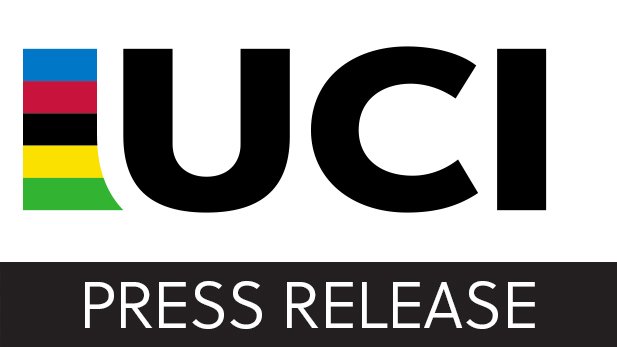Jacky Durand likes the new yellow card system, but doesn't have high expectations: "Even with these new provisions, there will always be falls"
CyclingWednesday, 19 June 2024 at 07:00

The UCI presented this Wednesday brand new provisions to improve the safety of road riders which will come into force from August 1 for a test phase. Among them, the introduction of yellow cards during races to sanction dangerous behavior and try to curb the epidemic of collective falls. For 'collecting' too many yellow cards, riders can look forwards to varying range of punishments from DQs to month-long suspensions.
"It’s a good idea," rejoiced Eurosport consultant Jacky Durand. "It could prevent certain riders from being knocked out of the race at the first mistake." Thus, a rider like Nicolo Parisini, removed from the race after first stage of the Boucles de la Mayenne after having involuntarily caused a collective fall during the sprint, could then have received only a simple warning.
Read also
Twenty-one racing incidents, which could concern riders as much as team directors or motorcycle journalists, have been identified as potentially worth a yellow card. And the sanctions will fall quickly: the second warning during the same stage or one-day race will be synonymous with exclusion, and seven days of suspension. "There will be a little shock for each rider when they learn that they have a yellow card," predicted Jacky Durand. "But there is no miracle solution for safety."
"It will always be the same riders who will be targeted. Over a three-week race, a sprinter could quickly have two yellow cards. But even with these new provisions, there will always be falls," Durand reminds.
Riders and other participants will not be notified directly of the warning, but only in the race report. "These yellow cards will not physically exist," specifies the UCI press release. We will therefore have to wait a little longer to see a man in black on a motorbike waving a yellow card at Tim Merlier and Jasper Philipsen after an intermediate sprint. And it's almost a shame.
Read also
claps 0visitors 0
Just in
Popular news
Latest comments
- The result at the TDF is independent of whether he rides Giro or not. 2nd at the TDFabstractengineer08-01-2026
- I wouldn't write them off for monuments any more than I would write off everyone competing against MVDP and Tadej. These two are the only clear favorites, but, if something happens Quick- Step has as good a chance as anyone.mij08-01-2026
- look at Remco and Egan. careers cut short if not permanently changed due to offseason crashes on the road. crashes happen, sadly, and being in competition does not make it any more or less likely.mij08-01-2026
- Makes sense. Finally got the Giro monkey off his back. Got a stage in all three GTs. He's never going to win the Tour, and probably isn't super fussed about fighting the young guns for leadership at other stage races. Why not just go out on a high?antipodeanpedalfan08-01-2026
- Everyone begins and ends life the same way. It's what we do in the middle that counts.paule08-01-2026
- Fact check false: I've crashed indoors before.acem8207-01-2026
- I'm wondering if he's quitting because Visma wouldn't make him their #1 at this year's Giro, which he believed suited him well. As defending champ he deserved his team's backing. After all, he's done a lot for Vingo.velodan07-01-2026
- If they keep sending Paul magnier to smaller races I expect he will bring in another heap of winsmobk07-01-2026
- Have a happy retirement, Simon. Not expecting this ...but well, you're leaving at the pinnacle of your careermhfrvz07-01-2026
- Talented, elegant rider. Enjoy your life, Simon! all the best.
 maria2024202407-01-2026
maria2024202407-01-2026
Loading
The UCI introduces new measures to promote safety at road races bit.ly/3KIb2XE
Write a comment











